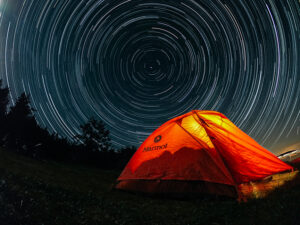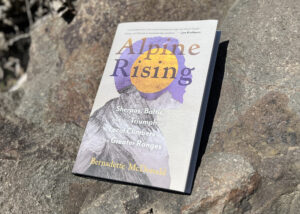As kids, we grow up admiring superheroes. In my day, it was Batman and Robin. Earlier, it was Mandrake the Magician. Later, Ironman. Many of us watch TV or read comic books dreaming of the infinite adventures our heroes can take part in. And then we get our first bike.
“When you first jump on a bike, it’s your first dose of freedom,” says Danny MacAskill. He’s a living superhero who has played out the dream of any kid. In 2009, he put a video online and became a superstar overnight. On his bike, he’s filmed bouncing effortlessly along fences, up tree trunks and rotating while flying down concrete steps. It’s like parkour but on a bike.

Danny MacAskill is more than a cyclist. He’s a performer. Photo: Wired UK
Later videos show MacAskill in a mini cartoon-like world that he navigates by bike. It’s clever, technical and highly creative. He’s a living superhero bought to the living room of every viewer. More than a cyclist, MacAskill is a performer. Actually, he’s a bit of a legend.
Before him, the cycling world had Hans Rey as their superhero. Rey now has a peppered beard and rings around his eyes, showing that youth since passed, but previously we saw him mountain bike down a skyscraper and other equally jaw-dropping feats. “The adventure part of my career was more like a natural evolution, says Rey. “I would become inspired by mountaineers and other people a generation before me who did similar things, but without bikes.”
In 2016, these two superheroes joined forces with Gerhard Czerner to mountain bike the highest free-standing mountain in the world: Mt Kilimanjaro. A crucial addition to the team is Thomas Lammle.
Lammle is a sports scientist and altitude physiologist. He’s there to critically monitor the team’s physical health. For this kind of adventure, nothing can be left to chance. “Biking here is trekking with an extra load,” Lammle explains.
A big part of the mission involves acclimatization to the thin oxygen. As a training climb, the team tackles 5,199m Mt. Kenya, taking a leisurely four days to ascend.
“2004 was my first descent of Mt. Kenya,” says Rey. “One of my hardest trips ever. This year, we did it as a warm up.” Rey speaks of “descents”, since for these guys, the downward blast on two wheels rather than the climb is the real thrill.
One of the crucial pieces of their puzzle is in the equipment that Lammle brings with him. His oximeter shows the oxygen level in the athletes’ bodies. At sea level, in a healthy body, the oxygen saturation is in the high 90s. “Up to 3,000m, we can almost keep it above 90 percent,” Lammle explains, “then the body has to change, because the heart rate is increasing…As long as the heart rate keeps increasing, you are not acclimatized.”
At 30, MacAskill is the youngest on this mission. He’s also the one most challenged by altitude. This is where Lammle’s oximeter proves its worth.
On Mt. Kenya, at 4,000m elevation and 34km traveled, MacAskill runs into trouble. His oxygen saturation is 55 percent and his resting heart rate is 140 beats per minute. That’s high, by any account. MacAskill temporarily ditches the bike and walks to Shipton’s hut. That’s 41km traveled and 4,200m up. Here, his resting heart rate reduces to 110. Still high. A helicopter is called for MacAskill, since there’s not enough time to acclimatize before reaching the top.
The rest of the team carry on to the summit and enjoy the ride down. The warm-up is complete, and the following morning they head straight across the border into Tanzania to begin Mt. Kilimanjaro. Part of the satisfaction of the project is being the first people to do both mountains back to back.
MacAskill is already there in Tanzania, waiting for them. He had an X-ray to check for fluid in the lungs. He had only a minor amount, so he’s cleared to join the team for Mt. Kilimanjaro.
But Kilimanjaro is more than 6,000m high. Five thousand five hundred metres seems to be the edge at which humans can live for a long time. These guys also have to get used to the altitude while carrying a bike.
There’s a point on Mt. Kilimanjaro where they must ascend 1,800m pretty directly. MacAskill was in hospital only two days earlier, and there is concern for his well-being. He too wonders whether he can handle the altitude.
Motivated by the prospect of riding down, they slog through sections that seem to last forever. At one point, they spot a campsite in the distance, which takes them more than seven hours to reach.

Danny MacAskill makes it to the top of Mt Kilimanjaro, despite being in hospital just a few days earlier.
Close to the top, the team carry their bikes on their shoulders, while using poles for stability on the snowy trail. A lot of burning lungs and legs. “The hardest 100m of vertical I’ve ever done,” MacAskill admits. Even superheroes are challenged at times.
At the summit, they’re above the clouds. It’s a site I could not have imagined in my most impressive dreams. It’s hard to describe the beauty in a way that does it justice. After reveling briefly in the moment, they point their bikes downhill. The moment that they came for has arrived.
They pulse down for more than 40km of downhill, scree sliding out from under the tires. Technical ability to stay on the bike is paramount here; there is a lot more at stake than just the altitude. But it looks like fun. It took three days to ascend, but the downhill is over in just a few hours.
It’s a far cry from the circus-style adventures that these superheroes enjoyed in their youth. But the skills they learned then transferred to this adventure: mainly, how to navigate with two wheels at speed on uneven surfaces. Then, there’s the lust for adrenaline and the satisfaction of achieving something for the first time. Something too, that many others don’t even ponder. Finally, there’s a reminder, as MacAskill discovered, that the mountains can be bigger than anyone, even superheroes.






